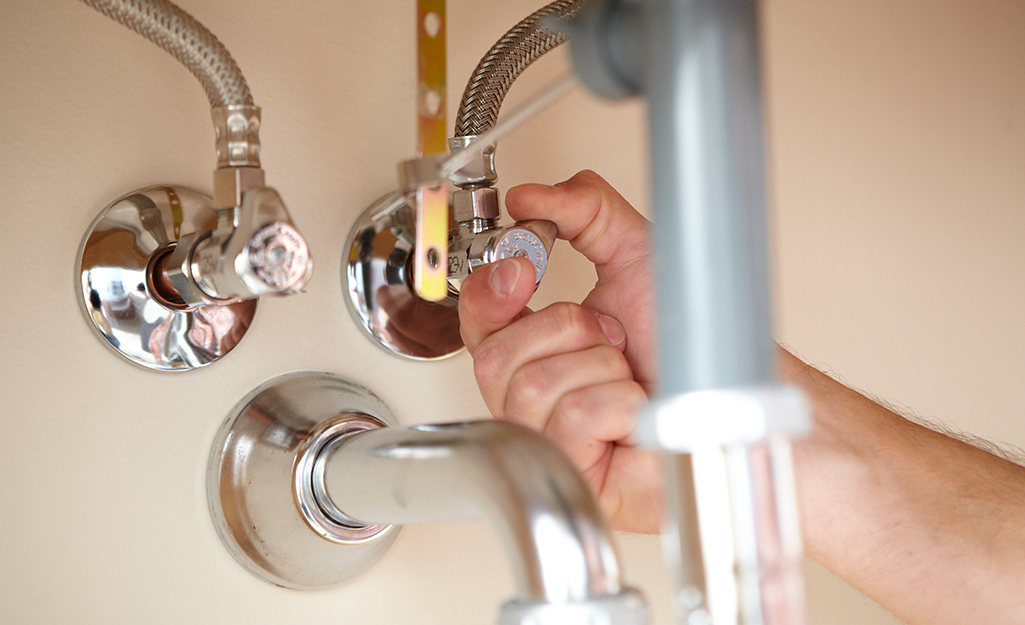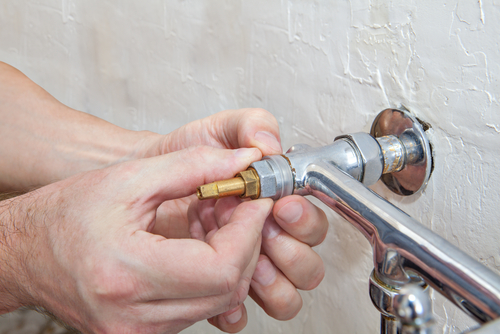Are you in search of tips involving Water Dripping from Faucet: Why and How to Fix?

Dripping taps might feel like a minor inconvenience, but their influence surpasses simply the annoyance of the sound. From drainage to sustaining unnecessary financial prices and wellness dangers, disregarding a dripping tap can result in numerous repercussions. In this write-up, we'll explore why it's crucial to resolve this common family issue quickly and properly.
Wastage of Water
Ecological Impact
Leaking taps contribute considerably to water wastefulness. According to the Environmental Protection Agency (EPA), a single tap trickling at one drip per second can throw away more than 3,000 gallons of water annually. This not only pressures water sources yet also influences communities and wild animals dependent on them.
Step-by-Step Overview to Dealing With a Dripping Tap
Tools Called for
Prior to trying to take care of a leaking faucet, gather the necessary devices, including a flexible wrench, screwdrivers, replacement parts (such as washing machines or cartridges), and plumber's tape.
Common Faucet Issues and Their Solutions
Determine the kind of faucet and the certain concern triggering the drip. Typical issues consist of damaged washers, corroded valve seats, or defective O-rings. Refer to producer instructions or online tutorials for step-by-step assistance on repair work.
Financial Expenses
Raised Water Costs
Beyond the ecological impact, trickling taps can pump up water costs substantially. The accumulated wastefulness gradually converts right into higher utility costs, which might have been stayed clear of with prompt repairs.
Potential Building Damages
In addition, long term trickling can bring about harm to fixtures and surfaces bordering the faucet. Water accumulation can create discoloration, rust, and even architectural concerns if left ignored, resulting in added repair service costs.
Health and wellness Issues
Mold And Mildew and Mildew Development
The continuous presence of wetness from a dripping faucet develops a suitable environment for mold and mildew and mold development. These fungi not only endanger indoor air high quality yet likewise posture health and wellness risks, especially for individuals with respiratory system problems or allergic reactions.
Waterborne Conditions
Stationary water in dripping faucets can end up being a breeding place for germs and various other virus, raising the risk of waterborne diseases. Impurities such as Legionella bacteria flourish in stagnant water, potentially resulting in severe ailments when ingested or inhaled.
DIY vs. Professional Repair
Pros and Cons of DIY Repair Service
While some may try to repair a dripping tap themselves, DIY repairs feature their very own set of obstacles. Without proper knowledge and tools, DIY attempts can aggravate the problem or lead to incomplete repair work, extending the problem.
Advantages of Hiring an Expert Plumber
Hiring a specialist plumber guarantees that the underlying root cause of the leaking tap is dealt with efficiently. Plumbing technicians have the knowledge and devices to detect and repair faucet problems effectively, conserving time and reducing the threat of additional damage.
Ecological Responsibility
Specific Payment to Preservation
Taking duty for taking care of leaking taps lines up with wider initiatives toward water preservation and ecological sustainability. Every individual's actions collectively make a substantial influence on preserving valuable resources.
Sustainable Living Practices
By focusing on timely repairs and embracing water-saving behaviors, people add to sustainable living techniques that benefit both present and future generations.
Preventive Measures
Routine Upkeep Tips
To prevent trickling faucets, do routine maintenance such as cleaning up aerators, evaluating for leaks, and replacing damaged parts without delay. Additionally, take into consideration setting up water-saving devices or upgrading to extra efficient fixtures.
Value of Prompt Fixes
Addressing dripping faucets as soon as they're noticed avoids further water wastage and potential damages, inevitably conserving both water and cash over time.
Effect On Property Worth
Understanding of Well-Maintained Residential Property
Preserving a building in good condition, consisting of resolving upkeep issues like dripping taps, boosts its viewed value and value among possible customers or occupants.
Influence on Resale Worth
Features with properly maintained plumbing fixtures, consisting of taps, command higher resale values in the property market. Dealing with dripping taps can contribute to a favorable impact throughout residential property examinations and settlements.
Verdict
Dealing with a leaking tap surpasses mere benefit; it's a crucial action towards saving water, reducing financial prices, and safeguarding wellness and home. Whether via do it yourself fixings or expert aid, doing something about it to repair dripping taps is a tiny yet impactful means to promote accountable stewardship of resources and contribute to a much healthier, much more lasting future.
How to Fix a Dripping or Leaky Faucet
A leaking faucet is one of the most common problems that homeowners encounter, but it being commonplace doesn’t make it any less annoying. The constant drip drip drip of a leaking bathtub faucet, showerhead, or sink tap can disturb your home’s serenity. Left neglected, a dripping faucet can also result in higher water bills and discoloration or mold growth in your sink or plumbing fixtures.
Fortunately, you don’t have to be a trained plumber to know how to stop a dripping faucet. With some basic tools, replacement parts, and a little patience, leaky faucet repair is a breeze. In this article, we’ll explain what causes dripping faucets and how you can fix them.
What Causes a Leaking Faucet?
Kitchen and bathroom faucets come in all manner of designs, but most involve some combination of valves, O-rings, seals, and washers. The O-ring is usually the weakest link, but any one of these pieces can wear down over time. Heat, moisture, temperature fluctuations, minerals, mold, and movement can contribute to warping and corrosion, breaking the watertight seal. This just comes with the territory of being a homeowner. Everything is always subject to wear and tear, and some component parts of your appliances and fixtures need to be replaced on occasion. At least replacement O-rings are cheap!
More rarely, dripping faucets can be a symptom of excessively high water pressure. Were this the case in your home, you would probably notice that the leak is not isolated to one faucet. Water pressure issues are harder to resolve on your own. We recommend contacting a professional plumber if you suspect your water pressure is too high.
How to Fix a Dripping Faucet
- Pipe wrench or monkey wrench
- Allen wrench set
- Screwdrivers
- Old towel or rag
Shut off the water.
Before you do anything, you need to turn off the water to keep from drenching your kitchen or bathroom. You should find a valve under the sink and against the wall. Once you’ve turned this valve, try turning the faucet on to confirm that the water source has been cut off.
If you can’t locate your local valve for the faucet you’re working on, you can always shut off the water to the house at the main valve. Of course, this will prohibit anyone from using the sinks, showers, or toilets while you’re working on the faucet that’s giving you trouble.
Plug or block the drain.
You’ll be disassembling the faucet and removing some small bits of hardware. Plug the drain with a stopper or rag to avoid the possibility of a small screw falling into your P-trap.
Take apart the faucet assembly.
There are several varieties of kitchen and bathroom faucets, each with its own manner of assembly. For detailed instructions on how to disassemble your faucet, you can refer to the fixture’s manual or contact the manufacturer. If you know whether you have a ball, disc, cartridge, or compression faucet, you can find detailed schematics online.
In general, you need to begin by removing the faucet handles. You might notice a small screw that you’ll need to remove with a screwdriver or Allen wrench. If you don’t see any visible securing hardware, it’s likely hidden under a decorative cap that can be unscrewed or popped off with flathead screwdriver.
Remove each piece methodically, consulting a schematic when necessary. Take notes or arrange the pieces in such a way to make it easier to correctly reassemble the faucet later.
Remove the cartridge.
Once you’ve removed the handles and securing hardware, you should be able to remove the valve cartridge or stem. Some cartridges will slide right out. Other faucet models will require you to loosen a nut with a pipe wrench before you can remove the valve stem.
Examine the exposed hardware.
With the cartridge or stem removed, inspect the component parts. Check the rubber O-rings for wear and tear. Also examine the seat washer for corrosion or other damage. These pieces are usually the responsible parties for a dripping faucet, but it’s worth inspecting the other component parts while you have the faucet disassembled.
Find replacement parts.
Once you’ve identified which faucet component has failed, find an identical replacement. Your local hardware store should have O-rings, seat washers, and other standard components in stock. If you have a luxury or uncommon faucet, you may have to contact the manufacturer for a replacement part.
It’s a good idea to take your old parts with you to the hardware store so you can compare them with the store’s inventory and be sure you’re purchasing the correct replacement.
Reassemble the faucet.
With your new parts in hand, reconstruct the faucet and handles. Don’t be tempted to overtighten screws or nuts. You might think this could create a better seal, but it can instead damage or bend a delicate part of the assembly and create a new problem for you.
Turn on the water and test the faucet.
The only thing left to do is test your work. Unplug the sink, turn the water back on, and try the faucet. Congratulate yourself on a job well done!
https://www.libertyhomeguard.com/how-to-fix-a-dripping-or-leaky-faucet/

We hope you enjoyed reading our topic about Leaky Faucets: Why They Happen & What to Do About Them. Thanks a lot for taking a few minutes to read through our content. Loved our post? Please quickly share it. Help another person find it. We recognize the value of your readership.
Comments on “When It's Necessary to Address a Faulty Faucet”